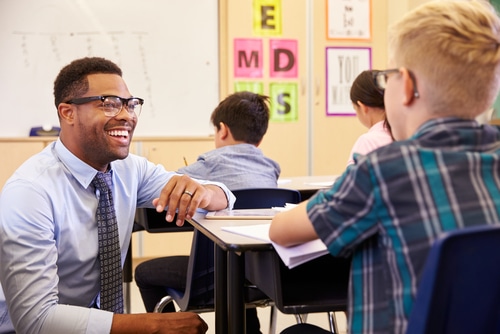Autism Spectrum Disorder (ASD), more commonly known as autism, affects a growing number of children in the United States. Researchers are still learning about autism’s causes. We do know a lot about teaching, though! Here are some ideas for teaching your student with autism.
Autistic Brains Work Differently
There is nothing “wrong” or “broken” about the brain of your student with autism. It is simply wired differently than the brains of neurotypical people. There is also a saying, “If you know one person with autism, you know one person with autism.” That describes the “spectrum” part of autism spectrum disorder. There are a wide range of symptoms and different levels of functioning. Every person with autism is unique. According to Autism Speaks, autism is “characterized, in varying degrees, by difficulties in social interaction, verbal and nonverbal communication and repetitive behaviors. […] ASD can be associated with intellectual disability, difficulties in motor coordination and attention and physical health issues such as sleep and gastrointestinal disturbances. Some persons with ASD excel in visual skills, music, math and art.” Early intervention is a key support that allows the person to realize his or her potential.

Source: Flickr user dierk schaefer
Rally Your Team
I am kind of a broken record on this point, but it is so important! Get together with the child’s family and the other educators and therapists who work with your student. General educators often aren’t taught how to address differing needs, and this can be challenging and frustrating in a classroom setting. Working together with your team can help you to build a toolbox. You can also feel more confident addressing the child’s IEP goals and interventions. You got this! 🙂
Have a Consistent Routine
Students with autism thrive on routine and predictability. Often, they actually need to be taught how to deal with changing plans, since this can cause a lot of distress. It will help your student to provide a predictable, consistent schedule to the day. With new activities or when there is a change to the schedule (like a fire drill, for instance), take extra care to explain exactly what will happen. You may need to explain this multiple times or regularly for a long period of time in advance (for instance, before a field trip). It also helps many students with ASD to have visuals describing their routine.
Provide Low-Sensory Spaces and Activities
Your student with autism may have “meltdowns” due to sensory overload or anxiety. These can look like tantrums or otherwise “acting up,” but in reality, these meltdowns — and all behavior — are a type of communication. Usually, a meltdown is communicating that a need is not being met.
Learn to recognize the warning signs of sensory overload. Some students may use repetitive motion (like rocking or hand flapping) to try to soothe themselves. Have a quiet corner or space where your student can regroup if needed. Some classrooms use a play tent or “cozy corner.” Other classrooms use a cozy reading nook. Your student’s occupational therapist can also help you provide activities to calm your student’s sensory system.

Source: Flickr user Wicker Paradise
Resources for Teaching Your Student with Autism
There is lots more info available online! Check these out:
- Temple Grandin (Adult and Advocate with Autism)
- CSEFL: Strategies for Building Social Emotional Skills (The “scripted stories” are especially useful!)
- Autism Speaks
Enjoy your student with autism! Remember to focus on strengths and be positive. Every child can learn!





Leave a Reply